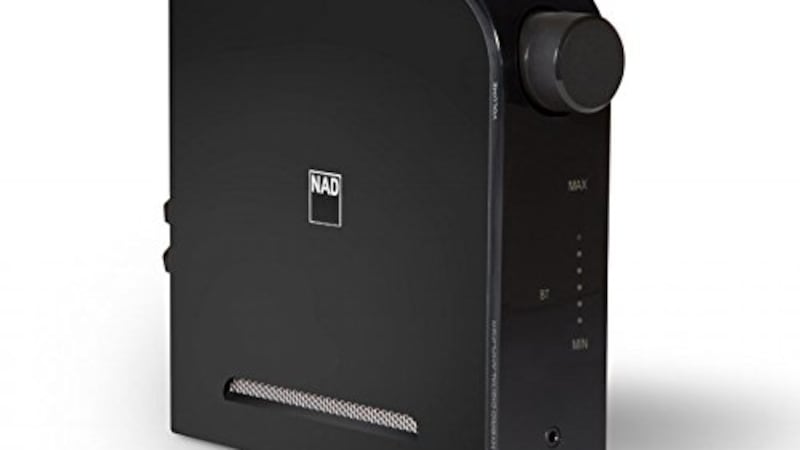I didn't know I was asking to meet a legend when we reached out to Canadian Hi-Fi brand NAD Electronics about the NAD D 3020. The numbers didn't mean anything to me—it just looked like the right amp for my needs.
Turns out, the newly released version of this tiny powerhouse comes from of a storied lineage. The NAD 3020 was originally introduced in 1978 and is well-regarded among audiophiles, many of whom have deep fondness for it since it was both relatively affordable and and of great quality.
None of that meant anything to me. I was just looking for an amp to power my awesome new set of ELAC B6 speakers. I wanted something vertical, so that it wouldn't take up much space on my desk, and with a high-quality DAC (that's a digital-to-analog converter, folks) on board so I could hook it to both my laptop and a SACD player. I do already have a vertical amp, Audioengine's N22, which I like, but which requires a separate DAC—the D3 is great, but I was both looking for a step up, and for something that I could use to play my growing collection of SACDs from my Blu-Ray player without using the on-board audio chip.
So we asked about the NAD 3020 ($400), and got the very first review model of the second iteration of the latest version, which was embargoed until after its introduction at CES.
Turns out, 3020's reputation is well-deserved. I've used this amp for about six weeks now, and will likely buy one after we send the review model back—it's everything it promises to be and a little more.

Despite its tiny footprint, the sound is rich, detailed and expansive. It provides more power than I need, delivering a true 40 watts per channel. There's great detail in the mids and plenty of oomph from the bass.
I've been really impressed with the 24-bit/192 DAC, which mixes eight channels into two and provides outstanding resolution with lots of detail.
Unlike version 1.0 of the 3020 in its current form, this one has phono inputs which allows you to hook up a record player and get amplification of the analog signal. You could also use this if you have a device with a DAC that you prefer, though I doubt you do and it's be a but of a waste.
I do have two quibbles with the 3020.
First, the fact that the 3020 goes to sleep after not being used awhile and doesn't automatically wake upon getting a signal. That means you have to touch the button-less control panel on the top every time you want to start a listening session.
The second problem is the lack of USB input, which means you'll have to find another way of getting a digital signal into it. Bluetooth has progressed to the point that it can deliver the same quality sound you get from WiFi, but this comes from aptX Bluetooth—fine for most of the world, but a little complicated for Apple users like me who have to download a utility to enable it.

Instead, I ended up using optical cables—handy, since my laptop's headphone port, my BlueRay player and Google's Chromecast Audio all have optical output. (Yes, all Chromecast Audio units have digital output, meaning you can use it to send a direct digital signal to pretty much any device out there—cool, right?)
All in all, the new version of the NAD D 3020 is pretty much the perfect amplifier for who people who want outstanding sound with a small footprint. Its versatility, power and outstanding sound make it a worthy successor to its legendary forbearer.
(Cool Stuff is a new feature at Willamette Week where we feature product reviews, roundups, sales and other commerce and shopping-oriented content. All Cool Stuff reviews are editorially independent, meaning we provide honest reviews and aren't paid by the brands we write about. If you do choose to purchase something after following one of our links, Willamette Week may receive a commission, which helps fund our journalism.)
